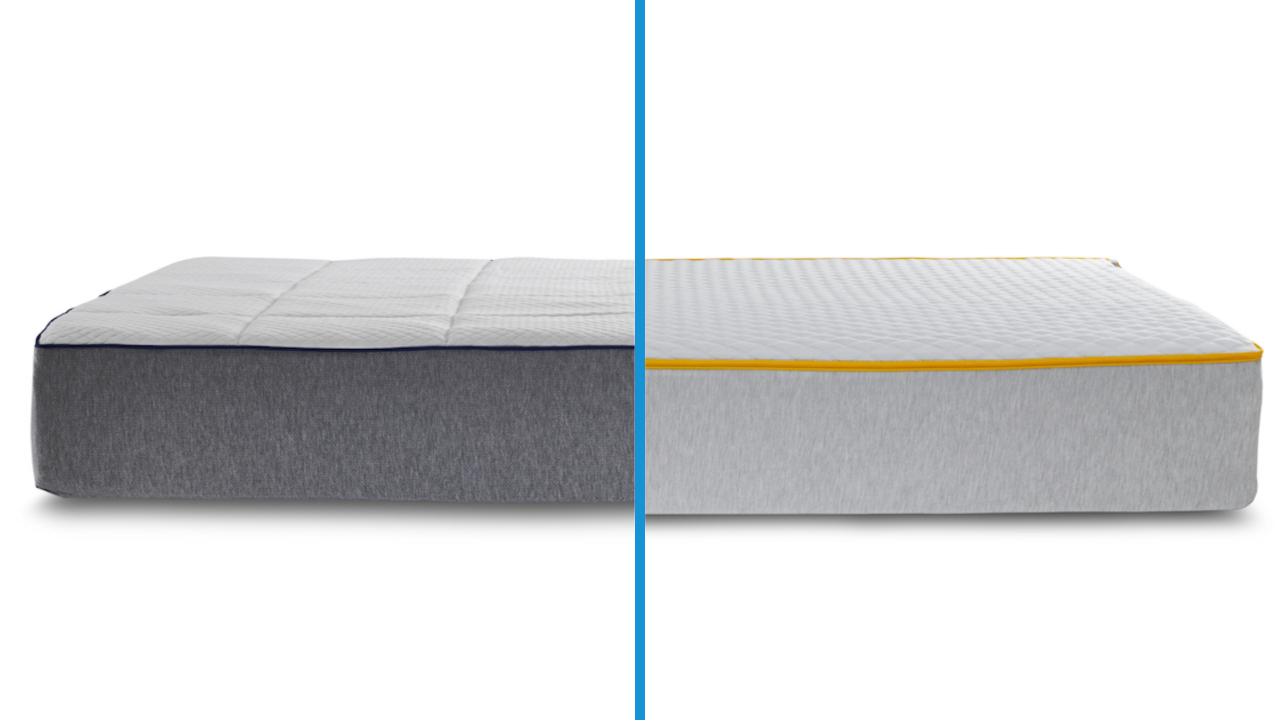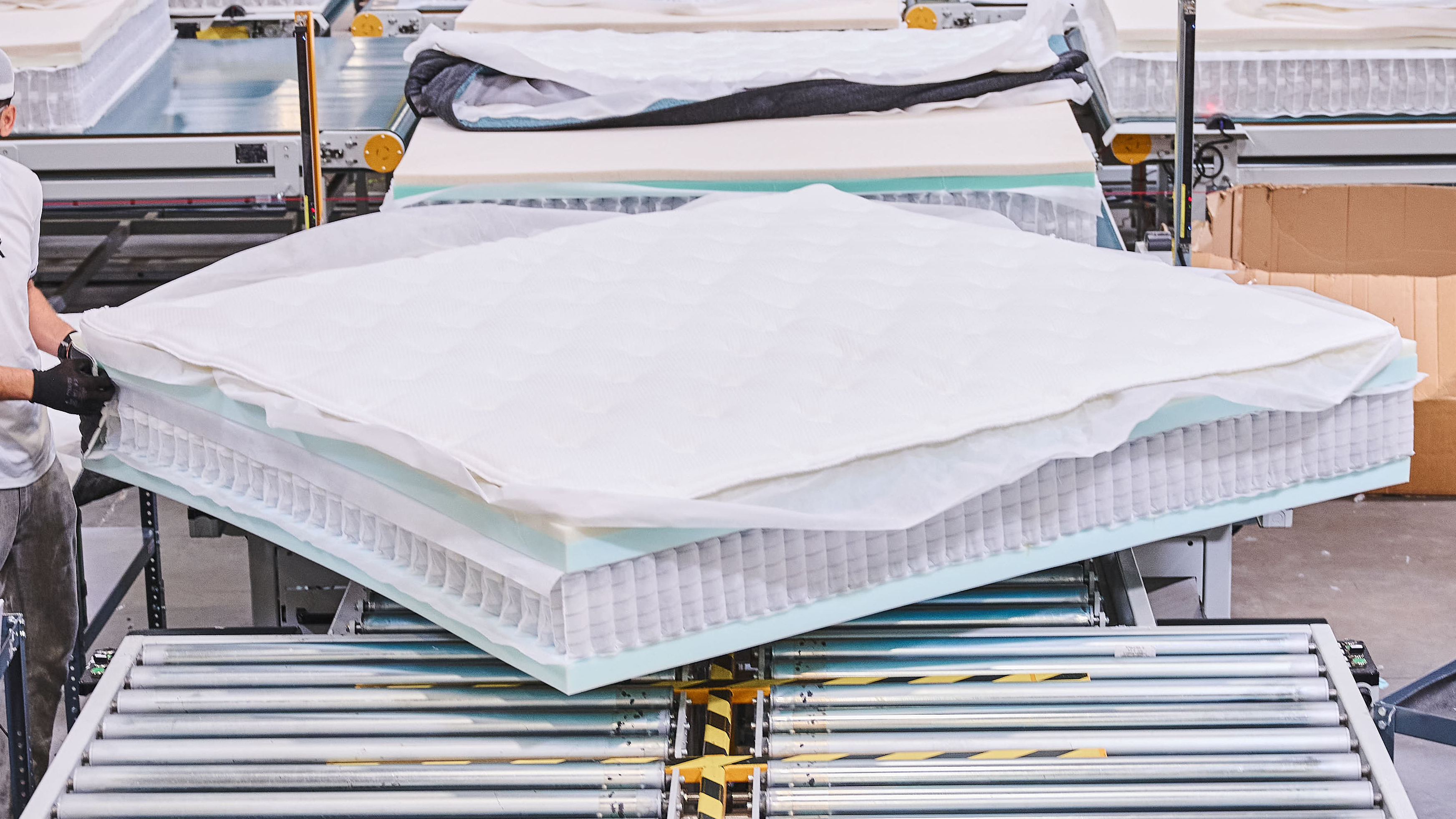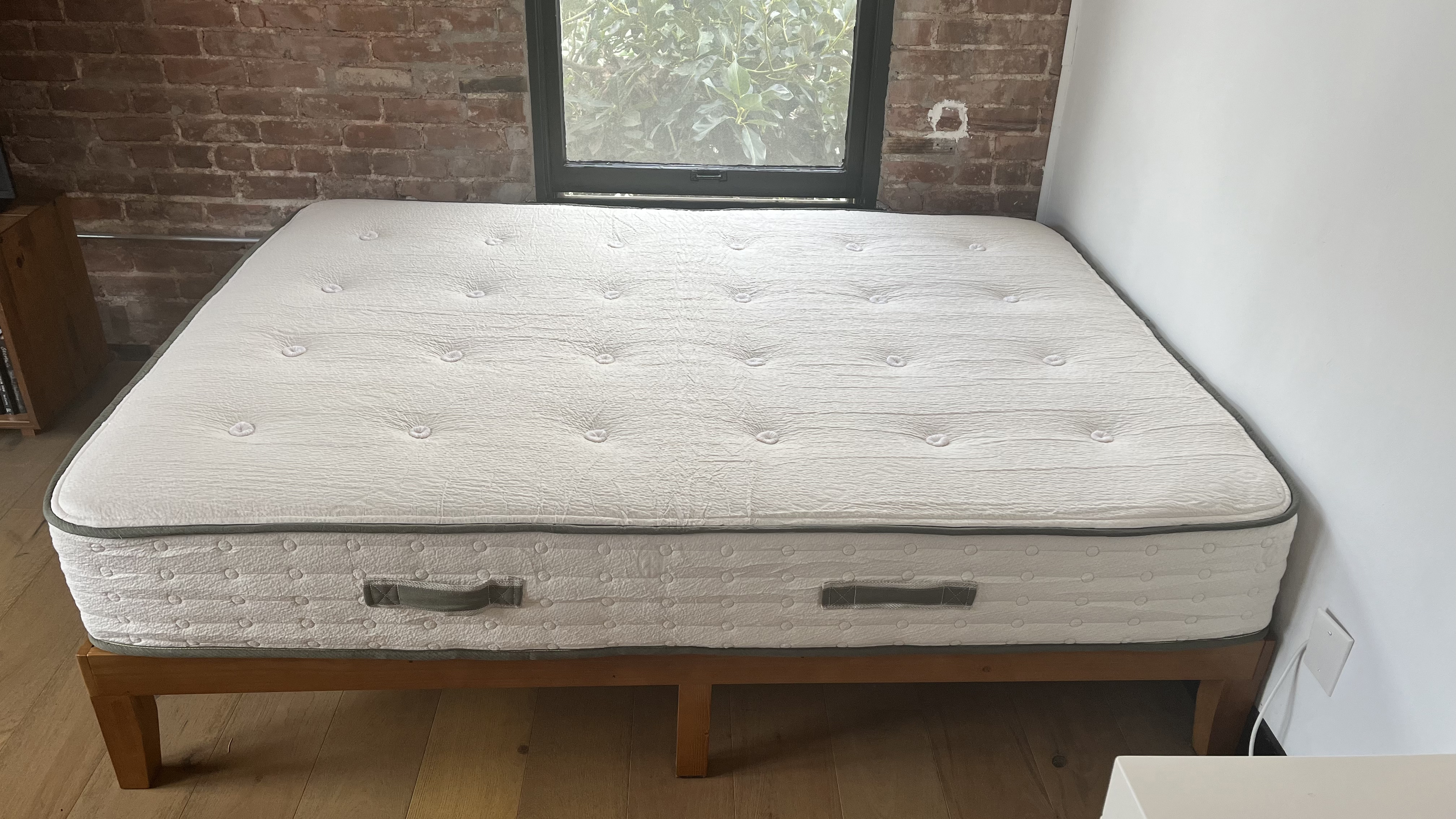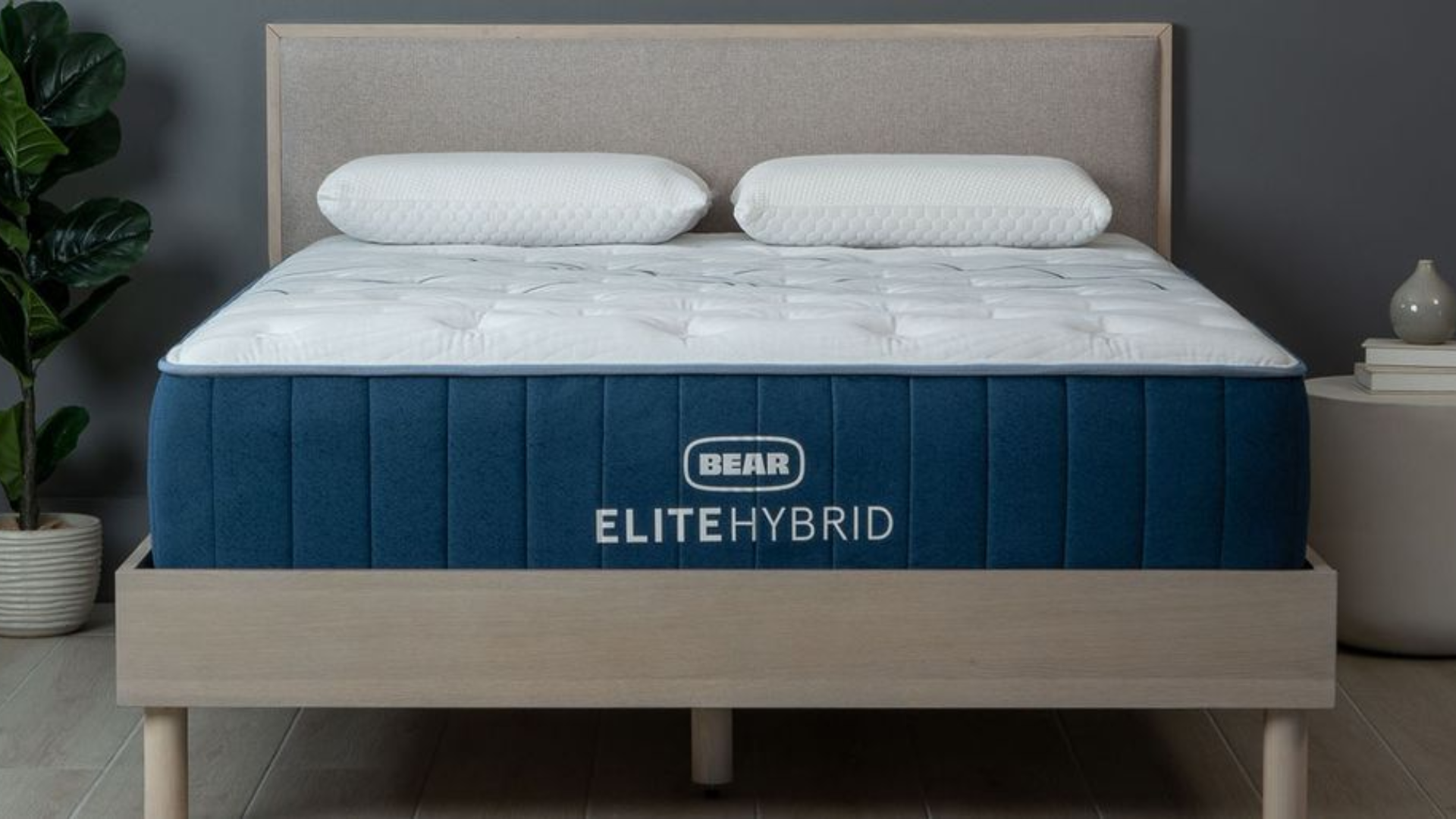Memory foam vs hybrid mattress: Key differences and how to choose
We look at the pros and cons of memory foam vs hybrid mattresses and which (if either) better suits your sleep

Memory foam vs hybrid mattress is one of the biggest decisions you'll need to make when buying a new mattress. They each have wildly different feels and performance, with memory foam cradling the body compared to hybrids that keep you more on top of the mattress.
Most of the top recommended options in our best mattress guide are either memory foam or hybrid, so you have plenty of choice available to you from leading sleep brands.
Hybrids are usually more expensive than memory foam mattresses but this month's mattress sales contain discounts on both types. Here's what you need to know about memory foam vs hybrid mattresses and how to pick between them...
Memory foam vs hybrid mattress: Key differences
What is a memory foam mattress?
Memory foam mattresses are made exclusively of synthetic foam. It's a combination of body-contouring memory foam and more rigid polyfoams for balanced support.
The best memory foam mattresses deliver excellent pressure relief and superb motion isolation — with specialist cooling models providing better temperature regulation than a standard all-foam bed. On the whole, memory foam mattresses are more affordable than hybrids, but you don't have to spend a whole lot for a quality memory foam mattress.

What is a hybrid mattress?
Hybrid mattresses contain both springs and foam — either memory foam, polyfoam, or latex. This makes them more expensive than all-foam mattresses, but hybrids tend to have a higher lifespan and better support for larger sleepers.
The best hybrid mattresses we've tested have excellent breathability, edge support, and ease of movement. Pillow tops add a touch of luxury and pressure relief, but the resistance from the coils could give hybrids a firmer feel than advertised.
You won't sink into the surface, either, although hybrid mattresses are just as capable of providing excellent pressure relief.
Memory foam vs hybrid mattress: Prices
- Hybrid mattresses usually cost more than all-foam beds
- However, both mattress types are available at any budget
- The length of the warranty depends on the brand
Generally speaking, hybrid mattresses cost more than their memory foam counterparts because they incorporate a greater range of materials. However, both types cater to every budget — you can find a cheap hybrid mattress just as easily as an expensive memory foam bed.
The quality of the materials will influence the final price rather than its construction. Most luxury mattresses are hybrids that incorporate durable foams, heavy-duty coils, and sumptuous pillow tops — but Tempur-Pedic, Saatva, and GhostBed are a few brands that manufacture premium all-foam beds for over $1,500 in a queen-size.

Hybrid mattresses cater to a larger group of sleepers thanks to their combination of foam and springs, so you'll find them at every price point. Linenspa, Allswell, and Siena sell their hybrid mattresses for less than $500 in a queen. DreamCloud, Nectar, and Brooklyn Bedding are known for their mid-range hybrids, with queen sizes selling for less than $1,200.
The length of the mattress warranty will depend on the brand, and has less to do with whether you buy a memory foam or hybrid model. Forever mattress warranties are becoming more common, with Helix, Brooklyn Bedding, and Leesa joining Saatva, Nectar, and DreamCloud in offering lifetime coverage. The average lifespan of a mattress is seven to 10 years, but you can expect to get more mileage out of a bed with quality materials.
Get instant access to breaking news, the hottest reviews, great deals and helpful tips.
No matter your budget, monthly mattress sales feature discounts on memory foam and hybrid beds. Some luxury brands are less generous with their discounts than others, but they usually participate during major shopping events like Black Friday, Presidents' Day, and Memorial Day.
Memory foam vs hybrid mattress: Materials
- Memory foam mattresses are exclusively made of foam
- Hybrid mattresses feature a mix of foam and springs
- Either is available in specialist builds for cooling and pain relief
Memory foam mattresses contain multiple types of foams. They typically comprise one or several top layers of contouring memory foam and/or polyfoam, a transitional layer of polyfoam, and a tall, dense polyfoam foundation.
Hybrid mattresses swap the foundational foam for a bed of individually wrapped springs with a thin layer of dense foam at the bottom for enhanced support and stability. Organic hybrid mattresses use natural latex instead of synthetic foams. Luxury hybrids feature pillow tops or Euro tops for a more inviting (and expensive) appearance. These toppers contain memory foam, latex, cotton, wool, or fiberfill.
Reinforced edge support is a common feature of hybrid mattresses. The perimeter or sides will either have thicker coils or high-density polyfoam, allowing sleepers to comfortably use as much of the surface area as possible. The surface of memory foam mattresses is fairly uniform, which might work against sleepers who tend to lie against or sit on the sides.
Specialist builds are available for either mattress type. These include cooling mattresses that incorporate heat-dissipating materials and ergonomic designs to support sleepers with back and joint pain.
Memory foam vs hybrid mattress: Pros and cons
- Memory foam beds isolate motion well but can trap heat
- Hybrids offer good ease of movement but lack profound sinkage
- Memory foam for deeper pressure relief; hybrids for more durability
When deciding between a memory foam and a hybrid mattress, you'll need to consider your sleep needs and preferences. Below is a breakdown of the benefits and drawbacks of each bed type according to key performance areas.
Durability
Hybrid mattresses tend to keep their shape better thanks to their coils, but those coils will eventually weaken or break over time, leading to less support and possible noise. Fortunately, the wrapped springs used in modern mattresses are pretty strong and relatively silent compared to the innerspring beds of yesteryear.
Memory foam mattresses are prone to developing permanent indentations, which is why rotating your mattress is so important. Since memory foam can trap heat, moisture can build up and cause the material to deteriorate. (Pillow-top hybrid mattresses may also have these issues.)
Whether you buy a memory foam or hybrid mattress, you can expect it to last 7 to 10 years on average. Higher quality materials, along with proper maintenance, can help your mattress last for well over a decade.

Edge support
Edge support is a key feature for sleepers with mobility issues who need to sit on the side of the bed to get up or down. It's also important for sleepers who find themselves lying against the edge or like to sprawl starfish-style.
Hybrid mattresses are generally a better choice for edge support because they often feature heavier coils or a dense polyfoam rail along the sides or even the entire perimeter. Memory foam mattresses have a more uniform feel across the surface, so if you have a softer all-foam bed, it may dip significantly under concentrated pressure.
Motion isolation
If you share a bed with a partner, pet, and/or your children, you'll want a mattress that minimizes movement transfer from across the surface. Foam in general is great at absorbing shock, which is why it's used in football helmets and running shoes. All-foam mattresses are usually better for bed-sharing, but hybrids with thick top layers of foam plus individually encased coils also perform well in this area.
Alternatively, you can buy a split king mattress if you want to share a bed while having your own surface to sleep on, preventing movement disturbing your sleep altogether. Split kings are available for select memory foam and hybrid models.

Pressure relief
Memory foam is popular for its body-hugging sensation, which can help reduce pressure buildup in the shoulders, hips, and knees. This doesn't necessarily dictate the firmness of the mattress as even firmer memory foam can still neatly mold to your shape — you'll just sink less.
For the most part, hybrid mattresses have a lifted feel. The reactive flex of the coils provides a stronger foundation and resistance to prevent you from sinking too low, so the contouring may be more subtle. That said, hybrids can offer profound pressure relief through pillow-tops, cushy comfort layers, and microcoils.
Responsiveness
The springs of a hybrid give it bounce, which makes it easier to switch sleep positions at night. A thick pillow top could mitigate this some, but for the most part hybrids are quick to respond to pressure.
Many memory foam beds are slow to snap back into place, and the close hug of the material can make some sleepers feel trapped. This mattress type is usually a better choice for sleepers who generally stay in one spot throughout the night.

Temperature regulation
Whether you occasionally sleep warm or deal with severe hot flashes, you'll want a mattress that doesn't trap heat. The open spaces around the springs of a hybrid mattress allow air to circulate freely while all-foam mattresses tend to trap heat, especially if they favor denser foams that allow for little airflow.
Cooling mattresses feature materials designed to wick away moisture and draw heat away from the surface. The may include foams infused with cooling agents and covers made with breathable fibers (like cotton) or phase change materials.
You can choose between memory foam or hybrid cooling mattresses, but the springs of a hybrid gives it a slight advantage in breathability.
Which should you choose?

Choose a memory foam mattress if...
✅ You like feeling hugged by your bed: While there are hybrids with cushy pillow tops to envelop your body, it won't feel quite like the sink of a memory foam mattress. However, this deep hug could affect ease of movement for combination sleepers and those who sleep with pain.
✅ You want a quiet night's sleep: All-foam mattresses have the advantage when it comes to absorbing motion and sound. Plus, there's no risk of developing creaky coils — although springs help hybrid mattresses last longer by preventing premature sagging.
✅ You have a smaller budget: Sure, you can find hybrid mattresses for cheap, but you don't have to spend nearly as much for a top-notch memory foam mattress. The hybrid versions of popular memory foam models usually cost a few hundred dollars more, and luxury hybrids can be prohibitively expensive.

Choose a hybrid mattress if...
✅ You sleep warm or have severe night sweats: While cooling memory foam mattresses exist, cooling hybrids benefit from the added airflow of their springs. Even cheap hybrids are likely to sleep cooler than all-foam memory foam mattresses in the same price range.
✅ You're a larger body type: The best mattresses for heavy people are hybrids with springs and high-density foams. The coils of a hybrid offer more resistance, which will benefit average to heavyweight sleepers.
✅ Strong edges are important to you: Hybrid mattresses with reinforced edges not only allow you to maximize your sleep surface — they also prevent premature sagging along the sides and in the middle. This will be more evident in higher-priced hybrids.

Based in Philadelphia, writer and editor Alison Barretta has been sharing buying advice and retail news for over 15 years. Since 2020 she's been helping Tom's Guide expand its robust library of sleep content by researching the latest trends, speaking with renowned experts, and going behind the scenes at Saatva, Casper, Sleep Number, Tempur-Pedic, and 3Z Brands. Alison has reviewed everything from budget mattresses to immersive luxury smart beds that automatically adjust to your every move. When she isn't reviewing mattresses or searching for great deals to save you money, Alison can be found practicing yoga and martial arts, experimenting with recipes, getting too invested in the Philadelphia Flyers, and snoozing with her cat / assistant mattress tester Alex.
You must confirm your public display name before commenting
Please logout and then login again, you will then be prompted to enter your display name.
